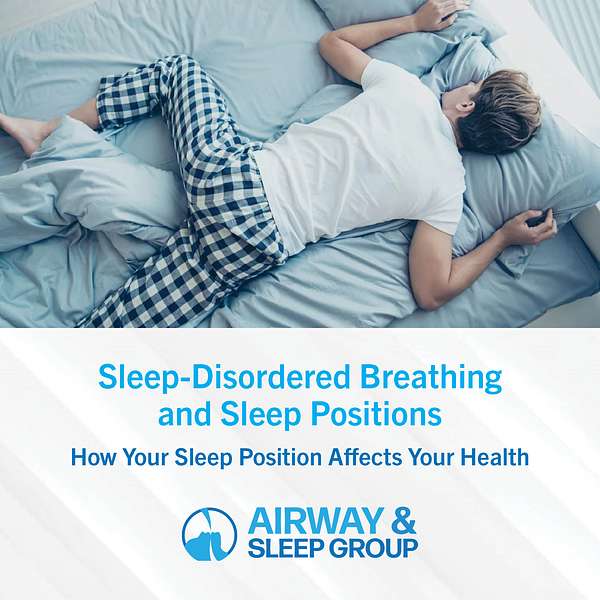
Airway and Sleep Group Podcast
Airway and Sleep Group Podcast
Sleep-Disordered Breathing and Sleep Positions
There’s nothing so rejuvenating than a good night’s sleep, but for many of those suffering with sleep-disordered breathing (SDB), sleep may not be refreshing. But did you know that your sleep position can play a role in a good night’s sleep?
SDB disorders, such as obstructive sleep apnea (OSA), are caused by repeated episodes of upper airway obstruction during sleep. This interrupted sleep can result in health hazards such as daytime sleepiness, hypertension, stroke, heart failure, diabetes, depression, and the possible development of mental disorders.
Having postural stability is important and is our foundation to be able to stand and walk independently. However, studies have shown that poor posture while sleeping or your choice of sleep position can lead to sleep deprivation, which in turn creates negative effects on a person’s daytime stability.
The results of poor sleep can reduce alertness levels and lower body temperature, which along with reduced oxygen saturation levels, can lead to unsteadiness an increased risk of falls, especially in older people. SDB has also been shown to alter reflexes and reaction time while driving, as reported in a study published in the BMJ Journals.
How Your Sleep Position Affects Your Health
The position in which you sleep can have an impact on your overall comfort and health, and certain sleep positions may be recommended for those suffering from sleep apnea.
Sleeping on your Back
Sleeping on your back (supine position) is a good position for those who can breathe well. Your body gets good support, and by raising the feet above the heart, it can help alleviate swelling of the feet and ankles (edema) to reduce the impact of congestive heart failure. This is also the preferred position for infants and can reduce the risk of sudden infant death syndrome (SIDS). On the other hand, for those who have trouble breathing, sleeping on your back can allow your lower jaw and tongue to shift back and obstruct the airway, leading to sleep apnea.
Sleeping on your Side
Sleeping on your left or right side (lateral position) with the legs drawn up into the fetal position may be a better solution to reduce the effects of sleep apnea and snoring. It helps keep your airways open. This position also has its drawbacks though. While lying on your side, your internal organs can shift and put pressure on the heart and lungs, causing the heart to work harder or reducing the lungs’ ability to take in air. Shoulder, hip and lower back pain can become issues in time.
Sleeping on your Stomach
The least common sleep position is on your stomach (prone position). It can avoid the problems associated with back sleeping and prevent organ shifts within the chest. It can also lead to neck pain, as the head must be turned to one side or another, and it may be harder to breathe with the weight of body limiting the diaphragm’s ability to take in air.
Sleeping Upright
You can also sleep in a position where your head is upright, as in a recliner chair or with a wedge pillow or adjustable bed. This position prevents airway collapse and may diminish problems commonly associated with sleep apnea. The downside is that you can’t easily change positions.
Address Sleep-Disordered Breathing with Airway & Sleep Group
For diagnosis and treatment of sleep apnea symptoms, contact Airway & Sleep Group at (571) 244-7329. Or complete our convenient online contact form. www.airwayandsleepgroup.com